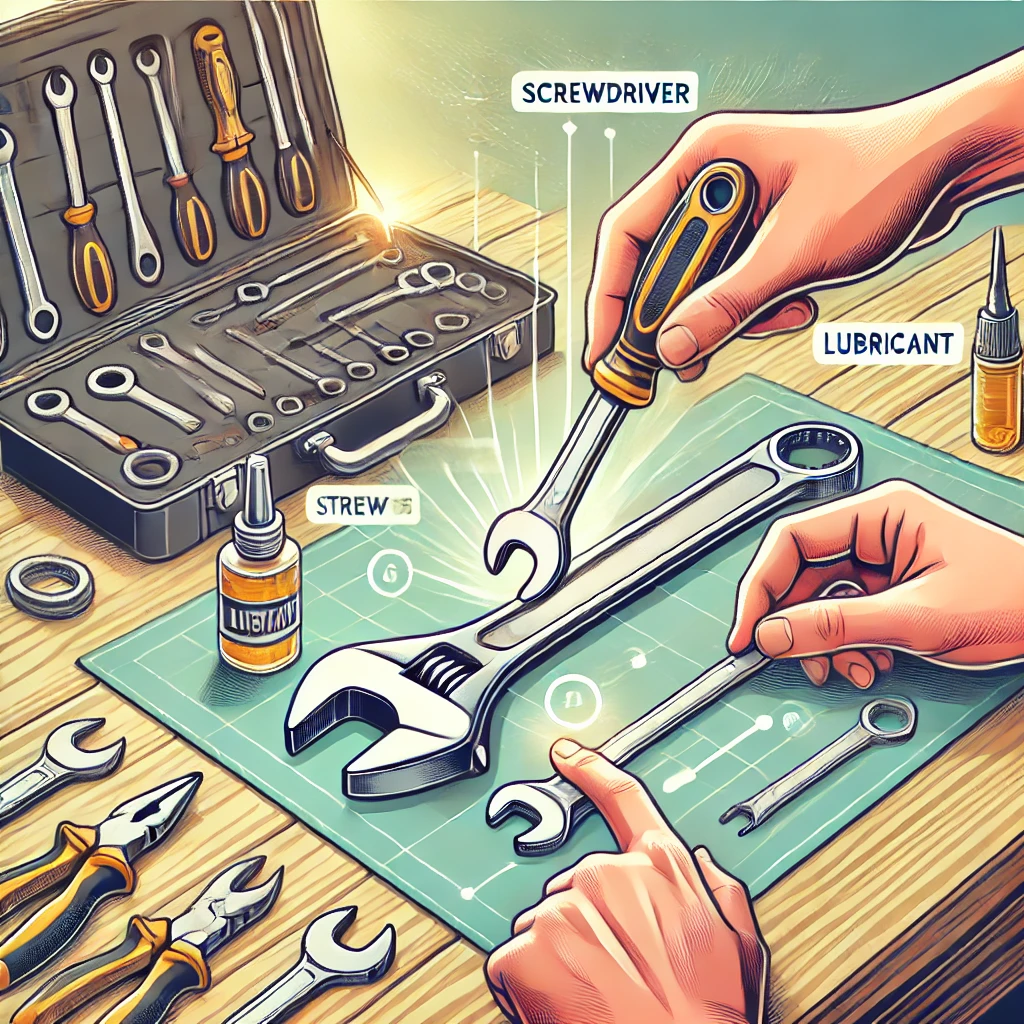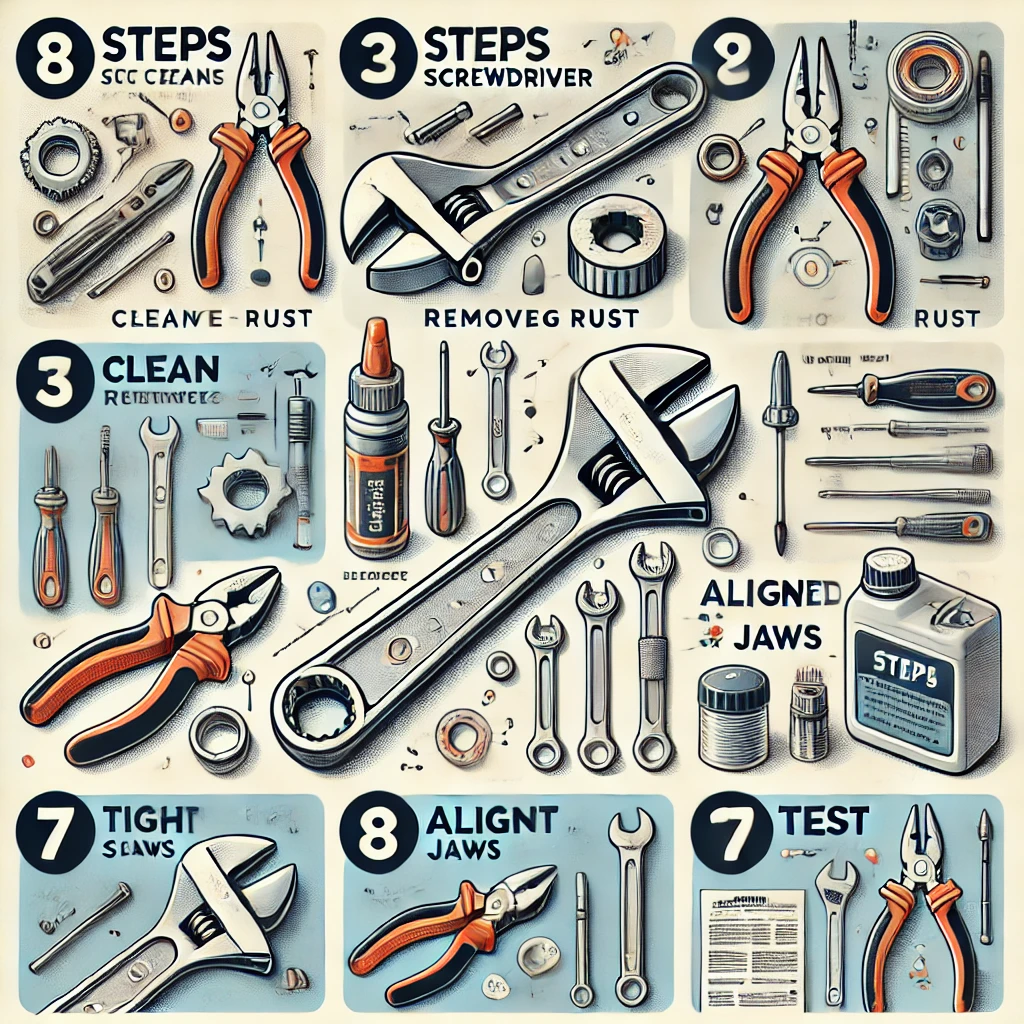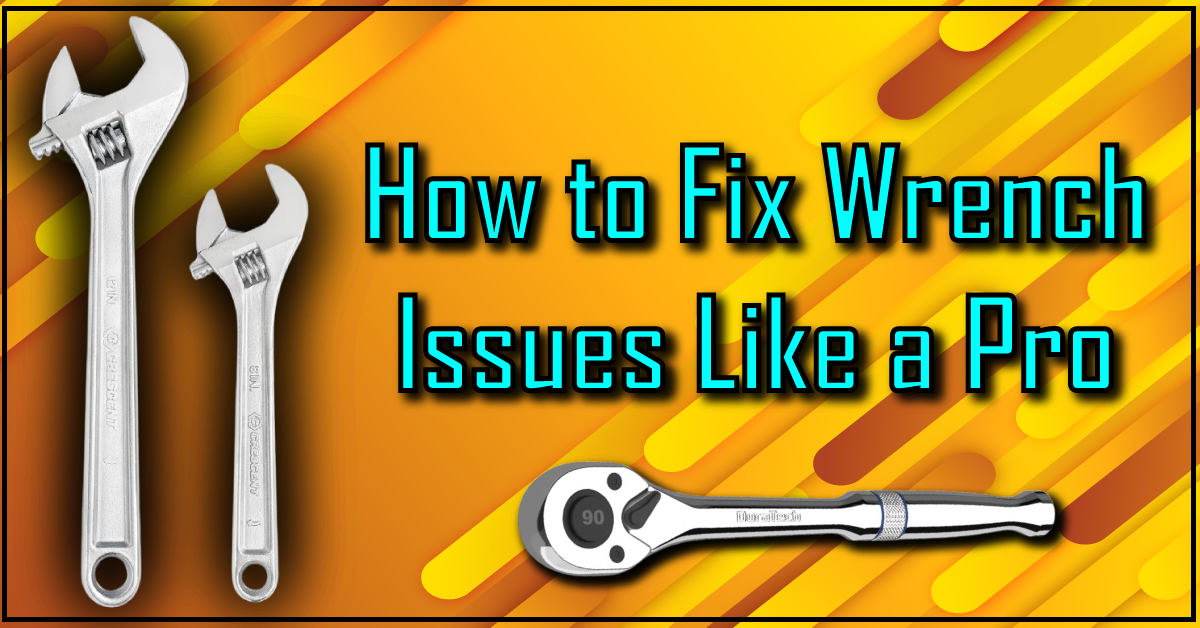How to Fix Wrench (Easy Steps for Everyone)
Hi there! Got a wrench that isn’t working right? Don’t worry. Fixing it is easier than you think. Let me show you how to get it working again.
Must-Have Tools in Your House If You Work Regularly
Step 1: Find the Problem
Start by checking what’s wrong. Is it stuck? Rusty? Too loose? Once, my wrench wouldn’t move at all. It turned out to be covered in rust. Identifying the issue makes the next steps simple.
Step 2: Clean the Wrench
Grab a toothbrush and some soapy water. Scrub away any dirt or grease. You might find tiny pieces of junk hiding in the grooves. Clean tools work better. It’s that simple.
Step 3: Add Some Oil
Lubricate the wrench. Use WD-40 or even motor oil. Spray or drip it on the moving parts. Then, move the wrench back and forth. The oil helps it work smoothly. Think of it as food for your tool!
Step 4: Tighten Loose Parts
Check for loose screws. Use a screwdriver to tighten them. This is a quick fix. It’s like tuning a guitar—small changes make a big difference.
Step 5: Test the Wrench
Try it out! Use the wrench on a bolt. Does it move smoothly now? If not, go back and clean or oil it again. Sometimes, tools need extra care.
Table of Contents
- How to Fix Wrench (Easy Steps for Everyone)
- Tools and Materials
- How to Spot and Fix Wrench Problems Like a Pro
- Fixing Broken Handles and Restoring Jaw Grip
- Maintenance Tips for Your Wrench
- Frequently Asked Questions – How to Fix Wrench
- Conclusion

A Fun Story
I once fixed an old wrench that belonged to my dad. It was rusty and stiff. I cleaned it, oiled it, and brought it back to life. Now, it works like new. Fixing tools is always satisfying.
Fixing a wrench isn’t hard. Clean it, oil it, and tighten anything loose. These small steps can make a big difference. Plus, you’ll feel great when it works again. Give it a try!
Tools and Materials
Fixing a wrench is simple with the right tools. Think of it like baking—you need the right things to get the job done. Here’s what you need.
Essential Tools
These tools will help you fix your wrench. They are easy to use and work for most repairs:
- Screwdrivers: Get both flathead and Phillips head.
- Adjustable Wrench: For loosening or tightening bolts.
- Pliers: To grip and pull small parts.
- Hex Keys: Also called Allen wrenches, for hex screws.
- Lubricant: Makes your wrench move smoothly after repair.
Most homes already have these tools. If not, you can buy them at a hardware store.
Materials You’ll Need
You’ll also need a few materials. These help you clean and fix your wrench. Here’s what to gather:
- Replacement Parts: Springs, gears, or pins for your wrench.
- Cleaning Supplies: A cloth and cleaner to remove dirt.
- Thread Locker: Stops screws from coming loose later.
- Protective Gloves: To keep your hands safe.
- Small Container: To hold screws so you don’t lose them.
Quick Tip
Get good tools and materials. Cheap ones may not last long. Quality makes the repair easier and keeps your wrench working longer.
How to Spot and Fix Wrench Problems Like a Pro
Hey there! Let’s talk about wrenches. They’re one of those tools you don’t think much about—until they stop working. It can feel frustrating when a wrench slips, rusts, or just doesn’t get the job done. But don’t worry, fixing wrench issues is easier than you might think. Let me walk you through some common problems and how to handle them.

Common Wrench Problems
Ever had a wrench act up? Here are a few issues you might run into:
- Slipping Jaws: The wrench doesn’t grip nuts or bolts properly.
- Rust and Corrosion: The metal looks orange or feels rough, making it hard to use.
- Loose Handles: A wobbly handle makes it hard to control.
- Wear and Tear: Over time, the wrench might just stop working as well.
Sound familiar? Don’t worry—I’ve dealt with all of these too. Let’s figure out how to fix them.
Troubleshooting Tips
Here are some simple steps to keep your wrench in great shape:
- Inspect the Wrench: Look closely for any cracks, rust, or damage.
- Clean It Up: Use a cloth or a wire brush to remove dirt and grime.
- Tighten Loose Parts: Check for screws or bolts that might need a quick turn.
- Apply Lubricant: Add some oil to keep it moving smoothly.
- Replace Worn Parts: If something’s too damaged, swap it out for a new part.
Taking a little time to do these checks can save you a lot of headaches later.
How to Clean a Wrench
A clean wrench is a happy wrench. (Okay, maybe not happy, but definitely more useful!) Here’s how to clean yours:
Removing Rust
Rust is the enemy. Here’s what to do:
- Soak the wrench in white vinegar for a few hours.
- Scrub off the rust with a wire brush. Go gently—you don’t want to scratch the metal.
- Rinse with water and dry it completely.
I remember soaking an old wrench from my grandpa’s toolbox. It came out looking almost new. Give it a try—it’s oddly satisfying!
Lubricating Parts
Oil is like a magic potion for your wrench. Here’s how to use it:
- Add a few drops of machine oil to the moving parts.
- Spread it around with a clean cloth.
- Move the wrench back and forth to let the oil work its way in.
- Wipe off any extra oil so it doesn’t attract dirt.
Trust me, a little oil goes a long way.
Fixing Loose Joints
Loose joints can make a wrench feel useless. Don’t toss it out—here’s how to fix it:
Tightening Screws
- Check all the screws. Loose screws are often the problem.
- Use the right screwdriver and tighten them gently. Don’t overdo it—tightening too much can damage the threads.
- If the screws won’t tighten, replace them with new ones that match the size.
I once tried to force a screw tighter, and guess what? I stripped it. Learn from my mistake and go slow!
Replacing Word n Parts
Sometimes, it’s not the screws—it’s the parts. Inspect the pivot point and moving pieces. If they look worn, replace them.
Buy parts from a trusted store and follow the instructions to install them. It’s a quick fix that can make your wrench feel brand new.
Taking care of your tools isn’t just practical—it’s rewarding. A well-maintained wrench lasts longer, works better, and saves you money. So, the next time your wrench gives you trouble, you’ll know exactly what to do. And hey, if you’ve got a tip or a story about fixing tools, I’d love to hear it!
Fixing Broken Handles and Restoring Jaw Grip
A broken wrench can make tasks hard. But don’t worry—you can fix it! Let’s go through the steps to repair a broken handle and restore the jaw grip.
Repairing Broken Handles
A broken handle makes a wrench hard to use. Fixing it is simple if you follow these steps:
Step 1: Get a New Handle
Find a replacement handle. Make sure it fits your wrench. You can buy one at a hardware store. Choose a strong and durable handle.
Step 2: Remove the Old Handle
Take off the broken handle. Use a screwdriver or pliers to help. If it’s stuck, be patient. Work slowly to avoid damage.
Step 3: Clean the Handle Area
Clean where the handle connects. Remove dirt, rust, or debris. A clean surface helps the new handle stay in place.
Step 4: Attach the New Handle
Put the new handle on. Align it with the wrench. Make sure it fits properly.
Securing the New Handle
Once the new handle is in place, secure it.
- Tighten Screws or Bolts: Use screws or bolts to attach it. Tighten them well but not too much.
- Check Alignment: Make sure the handle is straight. A crooked handle makes it harder to use.
- Test It Out: Try the wrench on a bolt. The handle should feel firm and easy to hold.
Fixing the handle is quick and makes the wrench ready for use again.
Restoring Jaw Grip
A wrench with a loose grip is frustrating. Here’s how to restore the grip:
Step 1: Align the Jaws
Check if the jaws are straight. Place the wrench on a flat surface. Look closely. If they aren’t aligned, tap them lightly with a mallet. Be gentle to avoid breaking the wrench.
Step 2: Adjust the Tension
Turn the adjustment screw to tighten the jaws. Turn it clockwise for a firmer grip. Test it on a bolt to check if it holds well. If it still slips, tighten a bit more. Don’t overdo it, as too much tension can break the wrench.
Testing the Repair
After fixing, it’s time to test.
Functionality Check
Use the wrench on a bolt. Does it move smoothly? If it’s adjustable, make sure it grips firmly. This shows the repair worked.
Safety Check
Look for cracks, loose parts, or damage. If the wrench has a lock, make sure it works. A safe wrench prevents accidents.
Maintenance Tips for Your Wrench
Taking care of your wrench is simple and important. With regular maintenance, it will work better and last longer. Plus, you’ll avoid rust and other damage. Let’s go over some easy tips to keep your wrench in great shape.
Regular Cleaning
Cleaning your wrench after each use is key. It’s like giving it a little TLC:
- Wipe it down with a dry cloth to remove dirt.
- For stuck-on grime, use mild soap and water. A quick scrub does the trick!
- Dry the wrench completely. This helps prevent rust.
- Add a drop of oil to the moving parts. This keeps everything running smoothly.
I like to clean my tools while putting them away—it only takes a minute and makes a big difference.
Proper Storage
Where you store your wrench matters. A good spot keeps it safe and rust-free:
- Keep It Dry: Moisture causes rust, so choose a dry place.
- Use a Toolbox: A sturdy box or case protects your wrench from damage.
- Avoid Sunlight: Heat can warp the metal over time, so keep it in the shade.
- Stay Organized: Hang your wrenches on a pegboard or keep them in slots. This way, they’re easy to find and always ready to use.
I once left a wrench outside overnight—it got rusty fast. Lesson learned: a little care goes a long way.
Frequently Asked Questions – How to Fix Wrench
Let’s answer some common questions about fixing a wrench.
How Do I Know My Wrench Is Broken?
Look for cracks, bends, or loose parts. If it doesn’t adjust properly, it might need fixing.
What Tools Do I Need?
You’ll need a screwdriver, pliers, and some oil. These tools help you tighten, adjust, and clean the wrench.
Can I Fix a Wrench at Home?
Yes! You can fix most wrenches at home. Just follow simple steps and use basic tools.
Why Is My Wrench Slipping?
Slipping happens when the jaws are worn or loose. Tighten the screws or replace worn parts to fix it.
Conclusion
Fixing a wrench isn’t hard. Follow these simple steps:
- Check for cracks or damage.
- Clean it well and remove any dirt.
- Tighten loose screws or bolts.
- Add oil to keep the parts moving smoothly.
- Replace anything that’s worn out.
With these steps, your wrench will work like new. Regular cleaning and care will help it last longer. Now you’re ready to handle repairs with confidence. Happy fixing!







